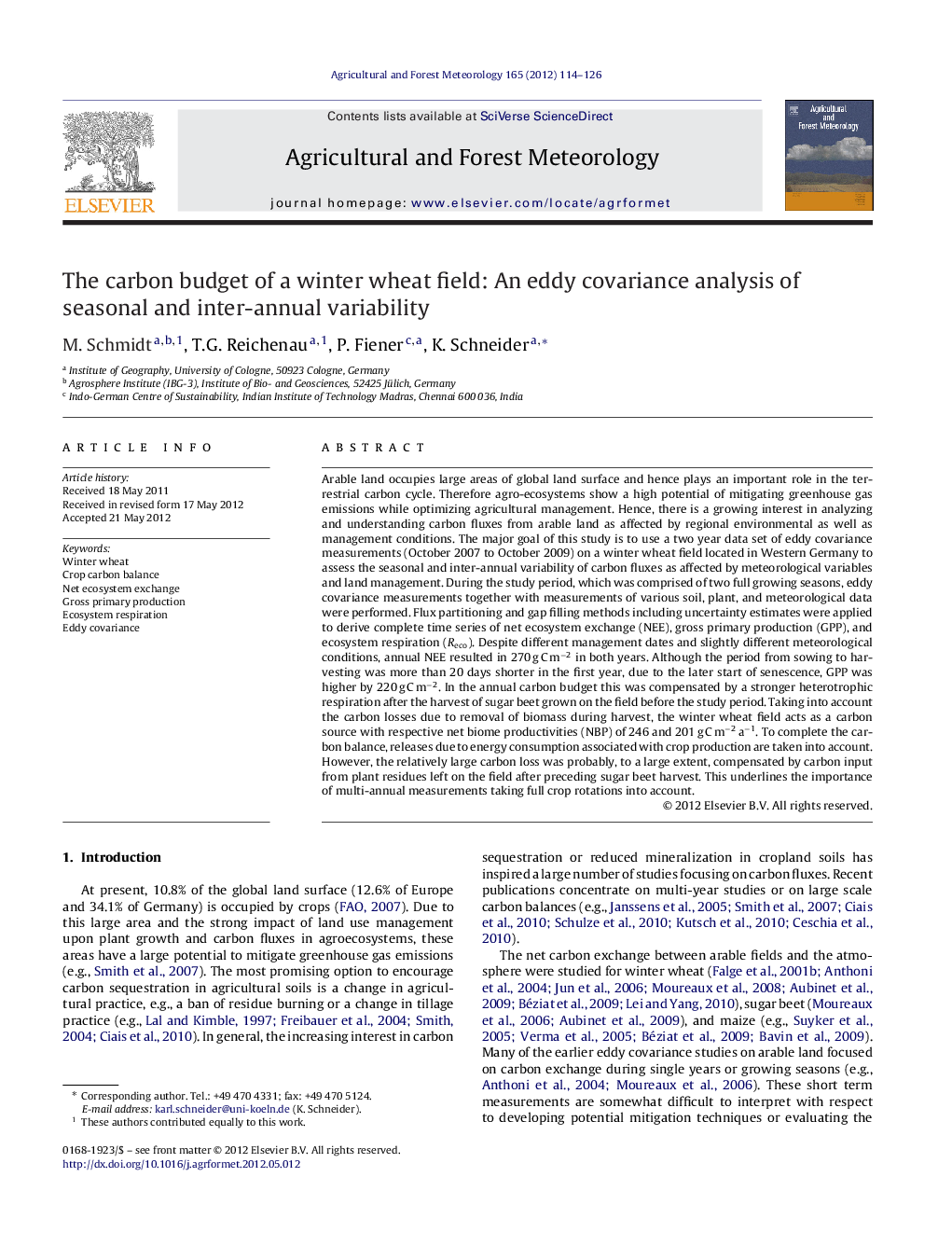| کد مقاله | کد نشریه | سال انتشار | مقاله انگلیسی | نسخه تمام متن |
|---|---|---|---|---|
| 81902 | 158357 | 2012 | 13 صفحه PDF | دانلود رایگان |

Arable land occupies large areas of global land surface and hence plays an important role in the terrestrial carbon cycle. Therefore agro-ecosystems show a high potential of mitigating greenhouse gas emissions while optimizing agricultural management. Hence, there is a growing interest in analyzing and understanding carbon fluxes from arable land as affected by regional environmental as well as management conditions. The major goal of this study is to use a two year data set of eddy covariance measurements (October 2007 to October 2009) on a winter wheat field located in Western Germany to assess the seasonal and inter-annual variability of carbon fluxes as affected by meteorological variables and land management. During the study period, which was comprised of two full growing seasons, eddy covariance measurements together with measurements of various soil, plant, and meteorological data were performed. Flux partitioning and gap filling methods including uncertainty estimates were applied to derive complete time series of net ecosystem exchange (NEE), gross primary production (GPP), and ecosystem respiration (Reco). Despite different management dates and slightly different meteorological conditions, annual NEE resulted in 270 g C m−2 in both years. Although the period from sowing to harvesting was more than 20 days shorter in the first year, due to the later start of senescence, GPP was higher by 220 g C m−2. In the annual carbon budget this was compensated by a stronger heterotrophic respiration after the harvest of sugar beet grown on the field before the study period. Taking into account the carbon losses due to removal of biomass during harvest, the winter wheat field acts as a carbon source with respective net biome productivities (NBP) of 246 and 201 g C m−2 a−1. To complete the carbon balance, releases due to energy consumption associated with crop production are taken into account. However, the relatively large carbon loss was probably, to a large extent, compensated by carbon input from plant residues left on the field after preceding sugar beet harvest. This underlines the importance of multi-annual measurements taking full crop rotations into account.
► NEE, GPP, and Reco of two growing seasons of winter wheat were analyzed.
► The eddy covariance data processing scheme was adapted to a small field size.
► Despite differences in management and meteorology, NEE was very similar in both years.
► Accounting for harvested biomass, the field acted as a strong carbon source.
► The loss of C was probably compensated by C input from crop residues after harvest.
Journal: Agricultural and Forest Meteorology - Volume 165, 15 November 2012, Pages 114–126